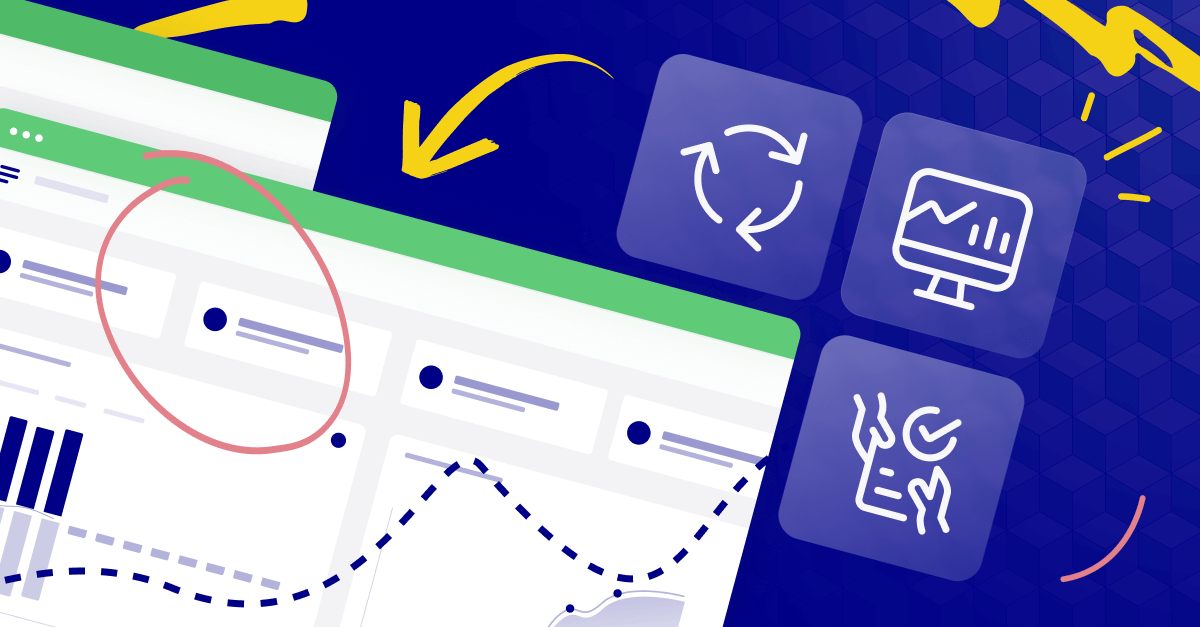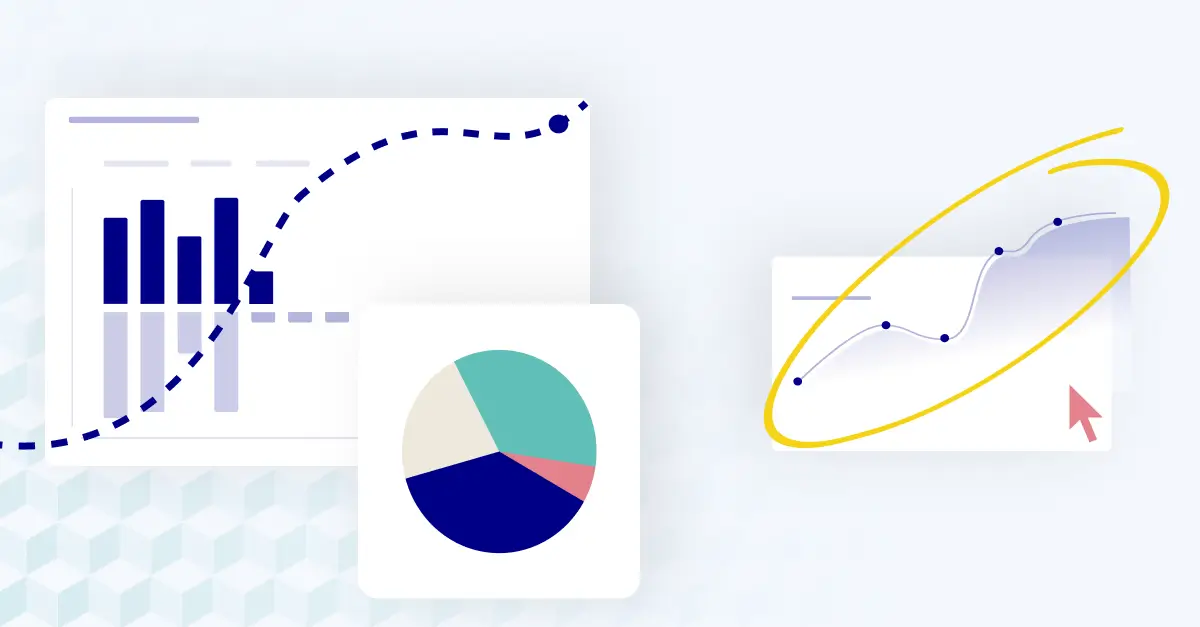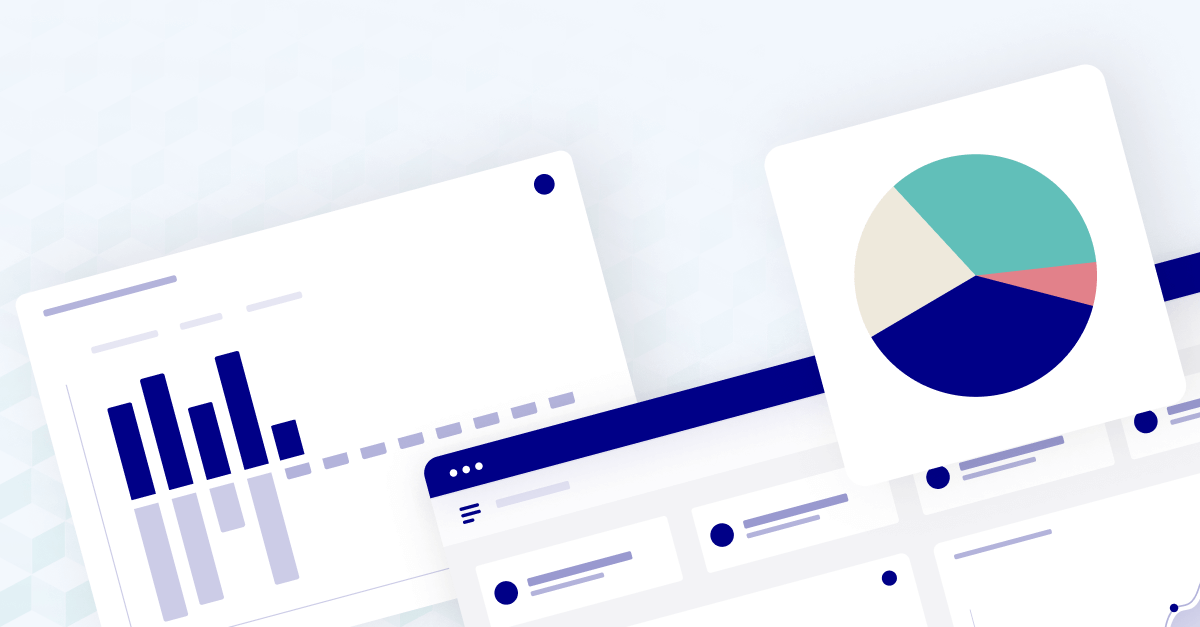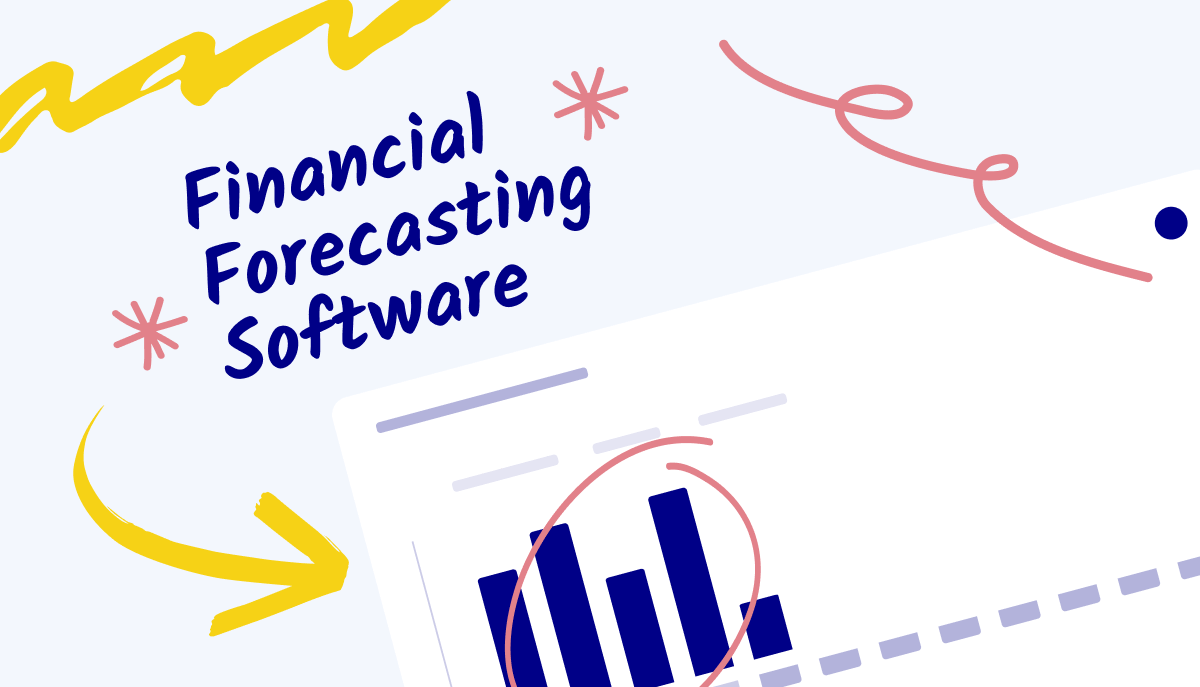Sales projections: the domino effect
Sales projections, also known as sales forecasts, use a variety of data sources to estimate future revenue. However, despite their name, they aren't solely designed to benefit the sales team.
For example, since sales forecasts help management determine sales quotas, HR can work off those sales quotas to determine how many hires need to be made.
It's a domino effect—and it all begins with sales projections.
The revenue forecasting process is also fundamental for creating budgets. When the finance team has an idea of how much the company will sell, they'll know how much money needs to be allocated for things like production, storage, and transportation costs.

Key factors influencing sales forecasting
Wouldn't it be great if having a solid product or service was all it took to guarantee sales? Unfortunately, we know there's a lot more to it than that!
While some factors like pricing or marketing are under our control, there are many that aren’t—like the state of the economy or industry trends. To get a truly accurate forecast of future revenue, you need to combine all of these aspects.
Some of the most important factors to gain an understanding of include:
Past sales data
One of the best ways to create an accurate forecast is by studying past sales.
Using historical sales data, you can examine how certain variables—like pricing or seasonality—affected sales in the past.
You can expect these trends to continue (although projected sales revenue may be affected by different factors in the future).
Market trends
Market analysis is a crucial part of forecasting sales. What is the demand for your product or service? Is it increasing or decreasing?
If it's decreasing, determining why can help you secure a larger piece of the market share pie. If it's increasing, it's probably safe to assume your competition is growing, too. How are they meeting demand?
Competitive landscape
To accurately project sales, businesses need to perform a thorough evaluation of the competition.
Identify where your business and other businesses overlap in terms of customers and messaging. Why are some people choosing another company over your own?
Answering this question can help highlight the factors you should be looking at in your own sales forecasts, such as pricing.
Customer behavior and preferences
A key step to understanding sales is understanding your target market.
How old are they? Which specific product features are important to them, and why? What, if anything, is changing in their world that might impact your sales?
This information is most useful when designing advertisements. The effectiveness of these ads can then be measured to help project sales.
Economic factors
Naturally, the economic landscape is going to have a huge impact on revenue projections. The relationship between metrics like GDP, inflation, and the success of your product needs to be clearly established.
Gathering data for sales projections
Once you've assessed the factors that can affect future sales, you'll need to gather the data that will be used in your sales forecasts. Data can (and should) be sourced both internally and externally.
Internal data
If you have it, start with historical sales data.
This is foundational for just about every quantitative approach for sales forecasting. For example, seeing how many units you sold at a certain time last year can help you guess how many sales you can expect to see the following year.
Next, look at your current sales pipeline. Which deals are most likely to close?
Lastly, don't neglect qualitative customer data (more on this later). Be sure to talk to customer representatives and sales teams to gain insight into how customers think and what factors may affect their buying habits.
External data
Pay attention to economic indicators such as the consumer price index (CPI), which shows the average change in the price of household goods (an inflation metric).
You'll also want to pay close attention to industry benchmarks. This will help ensure you're not falling behind competitors and confirm whether your revenue projections are realistic.
Lastly, market research reports provide a detailed examination of your industry. Studying these reports is one of the best ways to gather data for your sales forecast.
Sales forecast methods
Sales projections can be divided into two main types: quantitative and qualitative methods.
Quantitative methods are based on—you guessed it—numbers! These numbers may include historical information, macroeconomic metrics, and industry-specific indicators, among others.
Qualitative methods, on the other hand, focus on the opinions of those closely involved in the sales process or the company/industry as a whole. Where quantitative methods are objective, qualitative methods are subjective.
Quantitative methods
1. Time-series analysis
Time-series analysis bases sales projections on historical data.
A time series is simply an arrangement of data points that have been recorded regularly over time (think once per month or once per quarter). You can plot these out with a line chart.
Then, the analysis begins. Using this method, you'd look at how different factors have affected sales historically. For example, a time-series analysis looking at macroeconomic factors might determine sales grew at a specific rate relative to a specific increase in GDP. If the economy is expected to grow at a similar rate, you'd assume your sales will once again grow at the rate they did in the past.
There are many different types of time-series analyses, the most basic of which is the naive method. This method involves projecting future values by extending the current trend line without considering any other factors or changes in the data.
However, that's not very realistic. (It's called the naive method for a reason!) Even if you're involved in a comparatively stable industry, things are going to change.
The naive method is best used as a baseline. In other words, it's a good way to see if more advanced methods are providing value. Most of these advanced models are based on statistics.
2. Statistical models
There are several main statistical models commonly used in sales forecasting.
First, we have the moving average method. The moving average method will examine a specific window of past data, say the past three months. The goal of the moving average method is to provide a simplified and smoothed representation of sales data. For example, to calculate the sales value for month 25, you'd determine the average of sales for months 22, 23, and 24.
Next, we have exponential smoothing. Exponential smoothing would weigh recent sales more heavily because it assumes they're the most "up-to-date" in terms of the current market landscape. By assigning higher importance to the most recent observations, exponential smoothing can capture short-term fluctuations.
Lastly, ARIMA—or Autoregressive Integrated Moving Average—is an excellent method for looking at seasonal changes. It incorporates both autoregressive and moving average components, allowing it to capture and analyze the underlying patterns and fluctuations in time-series data with seasonal variations.
3. Regression forecasting
Regression forecasting is all about examining the relationship between sales and specific variables, like price or customer behavior.
In this calculation, sales are the dependent variable, while factors that affect sales are the independent variables. When you put each factor under a microscope, you can infer how modifying it would affect sales.
There are a few different types of regression forecasting:
- A linear regression examines the relationship between sales and one specific factor and can be represented with a line graph. The slope of the line represents the direction and magnitude of the relationship (e.g., if the price of a product increases, sales may decrease).
- Multiple linear regression allows you to see the effects of multiple variables at once. With multiple linear regression, businesses can investigate how different factors—when paired together—affect sales performance.
4. Market share method
The market share method is a top-down approach to sales forecasting. It begins with the total size of the (accessible) market that might be interested in your product.
To determine total market demand, multiply the number of buyers by how much they buy in your industry. From there, estimate your own market share.
The market share method does have a major flaw—there's no way to really know what percentage of a market you'll gain right off the bat.
Market share is influenced by various factors, including competition, pricing, product differentiation, marketing efforts, and customer preferences, which can be difficult to predict with certainty. Therefore, it's important to complement this method with other approaches.
Qualitative methods
1. Intuitive method
No one understands your sales cycle better than your salespeople.
Sometimes, simply asking the sales team for their opinion on the likelihood of certain deals closing can help you estimate projected sales.
However, there's always the chance they're overly optimistic, which means the intuitive approach is not the only method you want to rely on.
2. Jury of executive opinions
Typically, managers have a solid view of what's going on with their department. With the jury of executive opinions approach, managers from different departments (e.g., sales, marketing, finance, and production) would meet to discuss sales. Then, they would reach a consensus opinion.
Since it involves the evaluation of each individual department that contributes to the overall sales function, this technique can be useful for gaining a complete picture of the company.
3. Delphi method
The Delphi method involves consulting with industry experts, usually from outside the company.
First, each person comes up with their own assessment of future sales. Next, the group meets and compares their opinions. The goal is to come to a consensus.
Expert opinions can provide insights into factors that are challenging to quantify, such as upcoming technological advancements, shifting consumer preferences, and changing behavior. They can also help identify potential regulatory developments that may significantly influence projected revenue.
By considering these qualitative aspects, expert opinions complement numerical data and contribute to a more comprehensive understanding of the situation.
Creating a sales forecast
The first step in building a sales forecast is to gather and validate data. Focus on the internal and external data sources mentioned earlier.
Next, choose your method. Start by defining your objective (e.g., do you want to examine the impact of a specific factor on sales, or predict short-term trends?).
Once you have your objective, assess data availability. If you're a new company, for example, you won't have access to a lot of historical data, automatically excluding certain methods. You'd want to opt for qualitative sales forecasting and/or focus on industry benchmarks.
You should also ask yourself what degree of accuracy is required. It may sound strange to suggest choosing a method that's less accurate than another, but you may not have the time and/or computational resources to go for one that has pinpoint accuracy. Consider the trade-offs between accuracy and practical feasibility.
Sales forecasting is an ongoing process. As you go, you'll need to make adjustments to ensure the forecast remains accurate. Pay attention to relevant market changes, customer behavior, industry trends, and other external factors that can impact sales.
By continuously monitoring and analyzing these variables, you can adapt your forecast accordingly, making necessary revisions and fine-tuning your sales strategies to stay aligned with the evolving market conditions.
Best practices for projecting sales revenue
Consider adopting these best practices to better understand how to predict future sales, make smarter decisions, and achieve better results for your business.
Use multiple forecasting methods
You don't have to choose just one forecasting method. In fact, it's best to use at least two to gain a clearer picture of your situation.
If possible, conduct pilot tests or comparisons of different forecasting techniques. Evaluate the accuracy and suitability of each technique in relation to your specific sales forecasting needs.
Use your average monthly sales rate as a benchmark
Determine your average monthly sales rate, which can be useful as a benchmark to evaluate sales performance and track progress over time. By calculating the average monthly sales rate, you can compare it against current sales figures to assess whether you are meeting, exceeding, or falling behind your established baseline.
To determine your average monthly sales rate, start by calculating your annual sales forecast. Add your total sales revenue to the revenue you've projected for the rest of the year. Then, divide this number by 12 to get your average monthly sales rate.
Segment by product category or unit
Segmenting by product category will be a lot easier than attempting to forecast your entire company. You'll also want to forecast by unit, not dollar amount (or pound, yuan, etc.). This provides more detail and helps you hone in on specific variables like product demand, pricing strategies, customer preferences, and market saturation.
Consider external trends and seasonality
Remember that there's so much more to forecasting sales than your own capacity.
For example, changes in consumer preferences, technological advancements, or shifts in the competitive landscape can have a direct impact on sales.
By staying informed about these external trends, you can adjust your forecast accordingly.
Compare projections to actuals and make adjustments
No sales projection will be 100% accurate. However, you can help improve the accuracy of your sales forecasting by comparing projections to actuals. Review the cause(s) of the deviations and make necessary adjustments.
Adjust forecast for actual performance and changes
Adjust your forecasts to reflect actual performance so they remain accurate. Don't forget to adjust your forecast for any changes you plan to make, whether it's a price hike, an increase in staffing, or an increased marketing effort.
Interpreting and communicating sales projections
Interpreting sales projections involves understanding the different techniques and the information they highlight. For example, ARIMA shows time-series patterns and trends, while regression analysis shows the relationship between sales and specific variables.
Consider potential risks like sudden market shifts or regulatory changes. You'll need to communicate all of these aspects to shareholders in a way that's visually appealing and easy to understand.
If you chose regression analysis, for instance, explain how it works and why you chose it. Maybe you thought it was important to examine the relationship between marketing spend on a particular advertisement and customer acquisition.
Don't forget to get input from stakeholders. Even if you're using mainly quantitative methods, you can refine your forecasts with qualitative opinions. Stakeholders may notice something you didn't!
Leveraging sales projections
Sales projections are great at fostering a sense of community and shared goals throughout your company. You set a sales quota (i.e., a specific revenue target) based on sales forecasts, and every area of the business has to come together to achieve that goal.
Forecasts help guide decision-making as you fine-tune your organization to march in step with that projection. For example, you might notice a need to increase headcount in the sales department. Forecasts provide a roadmap for budgeting and resource allocation.
Sales forecasting also helps guide pricing decisions and product planning. If a sales forecast indicates high demand, you might consider setting prices slightly higher. You can evaluate the viability and profitability of new product ideas and prioritize product launches accordingly.
A sales forecast helps guide investment decision-making and territory planning. If you can reasonably assume a certain sales initiative placed in a certain area has a much higher ROI than the alternatives, you'll know to go for that one.
Conclusion: simplify sales forecasting
Following these steps is a surefire way to fine-tune your forecasting efforts. However, to make the process as efficient as possible, it's best to leverage the right technology.
Want to learn how Cube can help you simplify sales forecasting even further? Request a free demo today.



.png)









